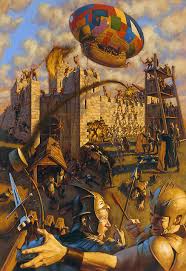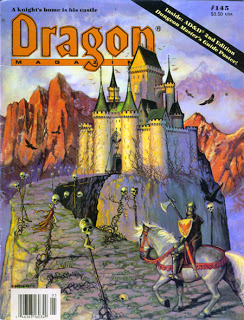Castles in Dungeons and Dragons are an essential part of the story. Dungeons and Dragons campaigns typically occur in a fantasy world in which a feudal society is present. Kings, princes, barons and even evil wizards often live in castles. Castles may be the “dungeon” in which the delvers explore. Sometimes castles are in ruins. Other times they may be a formidable looking fortress.
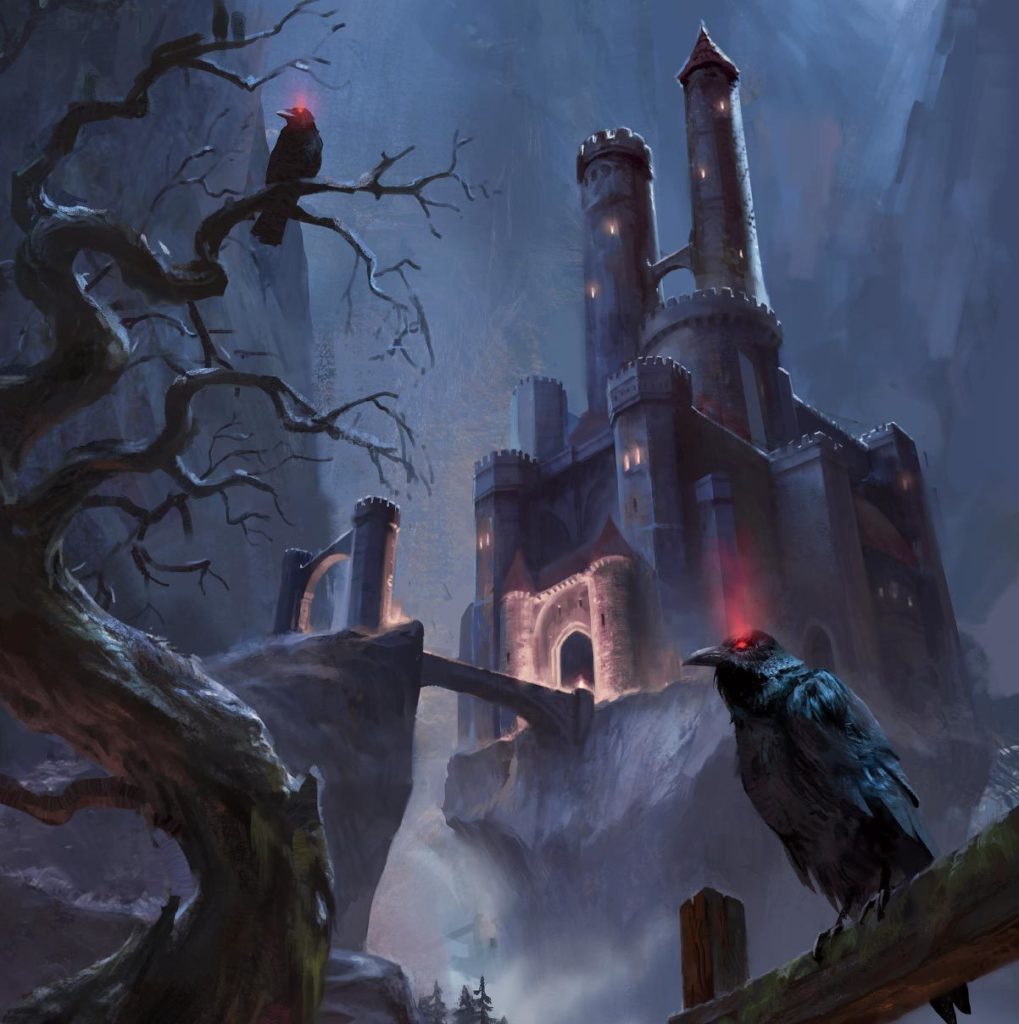
Are castles in Dungeons and Dragons irrelevant?
Many authors, in different places on the web and in magazines, have suggested that in a world of magic such places are not a fortress at all. They suggest that with spells such as passwall, teleport and the like that such places are not really difficult to enter at all. Magical portals might also allow entry. And fly spells could also allow one to enter the castle from above.
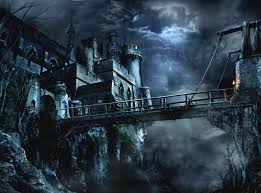
Some spells and magical items do make entry into the castle easier. Such spells might include:
- Passwall
- Fly
- Gaseous form potions
- Teleport
- Teleport without error
- Magical portals
- Phase door
- Disintegrate
- Jump
- Spider climb
- Rope trick
- Levitate
- Magic carpets
- Dimension door
- Transmute rock to mud

However…..just because the adventurers might have magic that does not mean that there can be no ways to prevent such magic from allowing entry into a castle. Some ways in which magic might be prevented from allowing easy access to a castle might include:

- Low levels of experience of the adventurers
- Magical seals and wards which prevent teleportation into the castle
- Lack of knowledge of the inside of the castle might result in teleportation errors
- Alert guards will notice anyone flying over the castle and will attack
- Alarms will be set off when anyone approaches the castle from the sky
- Traps might be laid in places where teleporting into a castle might seem obvious
- Sometimes wizards are employed by castle builders to place magical traps and to think of ways into a dungeon through use of magic.
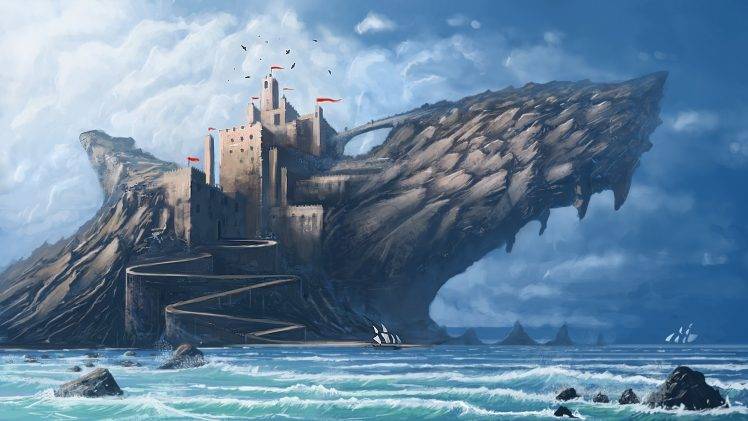
Regardless of the usefulness of castles against magic one thing should always be clear to the dungeon master. Magic is generally considered rare in most Dungeons and Dragons campaigns. While the adventurers are powerful and well trained the common man is not. Most people will not have the means to use magic to enter the castle. And this includes most invading armies.

Who lives in castles in Dungeons and Dragons?
In a feudal society like most fantasy worlds there are a number of different entities which might choose to live in such a castle. Some of these might include:
- Royalty
- Nobility
- Evil Wizards
- Adventurers keeps
- Military outposts on the edge of civilization
- The local militia
- The king’s army
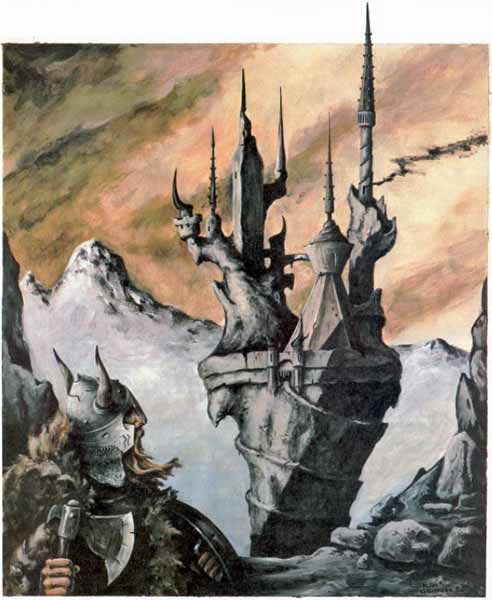
Taxes in a castle in Dungeons and Dragons
Entering and living in a castle is rarely without costs. Taxes and other fees can soak the adventurer visiting such places. Some of these taxes might include:
- Sales
- Luxury
- Inheritance
- Tolls
- Market taxes
- Tithes
- Land taxes for nobles
- Magic taxes for use of magic within the walls
- Income taxes
- Sword taxes
Every time an adventurer comes and goes from the safety of the castle walls they might feel the bite of the tax man.
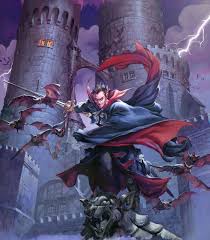
Who builds castles in Dungeons and Dragons?
Naturally not everyone can do so. They are expensive, of course, but they also typically may not be built by common folk. Land must be acquired. All of the land is generally owned by the kingdom itself and land is granted by royal decree. But land can be obtained in other ways:
- Inheritance
- Conquest
- Purchase
- Royal charter
- Claim jumping
- Leasing
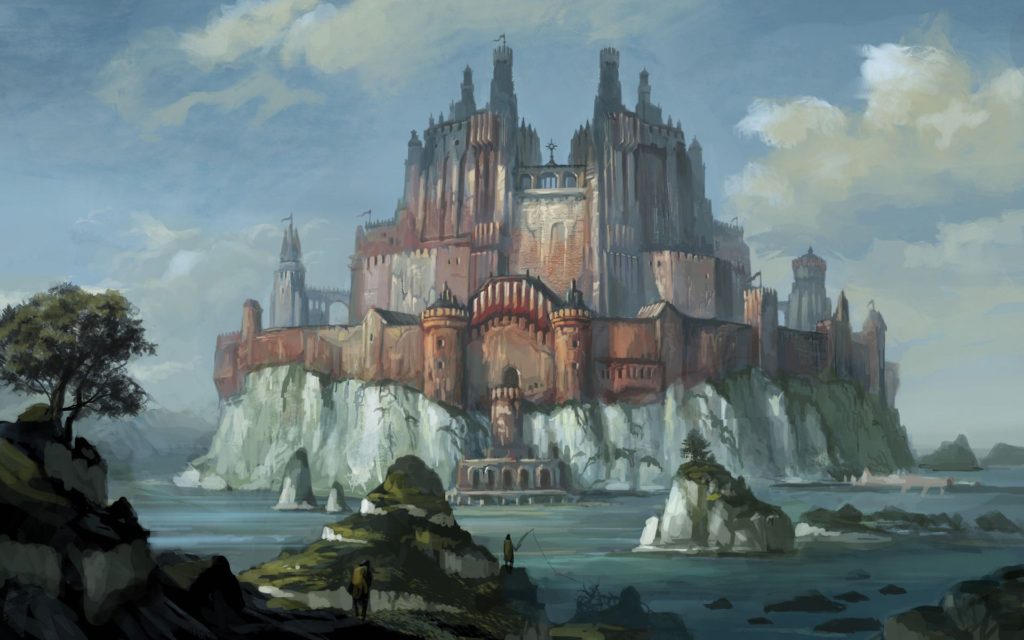
Building Castles in Dungeons and Dragons can be quite expensive
This topic was discussed in depth in the 1st Edition Dungeon Master Guide. There are many costs associated with constructing a castle. Some of these (with suggested prices) include:
- Arrow slits – 3 gold pieces
- Barbicans – 4000 gold pieces
- Battlements – 20 gold pieces
- Catwalks – 10 gold pieces
- Iron Doors – 100 gold pieces
- Wooden doors – 10 gold pieces
- Drawbridges – 400 gold pieces
- Gatehouses – 2000 gold pieces
- Tower, round 20×30 – 850 gold pieces
- Tower, round 40×30 – 1600 gold pieces
- Moat, 100x10x20 (length, depth, width) – 250
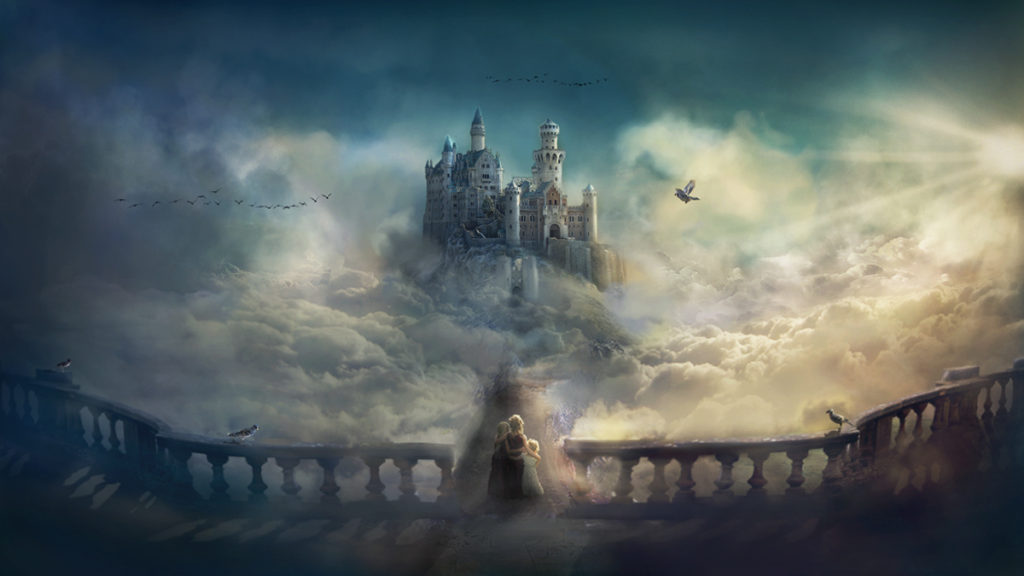
Typical castle structures and improvements used in castle design
Castle design evolved over the years. But over time certain specific structures and fortifications became commonplace for defense. Some of these structures include:
- Moats – deep ditches around the castle filled with water and other nasty things. Often they were used for human waste.
- Drawbridges – these platforms could be raised or lowered to cross over moats
- Gatekeeps -these were fortified areas leading into the castle entry. These allowed the defenders to attack those approaching the castle before they even could get to the gate itself. These consist of multiple towers and an open kill zone. Should anyone get past the gatekeep entrance they will still be under fire from the towers on all sides.
- Towers – towers could be round or square. Some towers might rise much higher than others to allow leaders inside a better view for defense.
- Tunnels – it pays to have more than one way in and out of a castle. Hidden entrances and exits can allow resupply during times of siege
- Stone walls – castles are only as strong as the walls that protect them. Use of the best stone available is highly advisable.
- Hoardings – these are structures that jut out from the top of the wall and allow the defenders to fire down upon, or drop burning oil on, those at the very base of the castle walls
- Posterns – these are small doors that allow a few defenders to sneak out of a castle unnoticed.
- Barbican – these are outer defenses for castles and walled cities. Often these involve double towers above a gate or a drawbridge
- Arrow Slits – for firing with cover from towers and walls
- Catwalks – to walk along the wall without being under direct fire from enemies outside the walls
- Rampart – a defensive wall having a broad top with a walkway
- Parapet – a low defensive wall along a roof, bridge or balcony
- Stairs leading to the walls or to the towers inside of the castle
- Cauldrons for pouring boiling oil on enemies below
- Murder Holes – these are holes in a ceiling of a gateway or passageway. Defenders can drop boulders or flaming oil on attackers. They can fire bows and crossbows into these holes will little risk of retaliation
- Merlons – these are the solid pieces of stone which jut up from the tower roof and castle walls to protect the defenders and provide cover to them. The space between merlons is called a crenel.
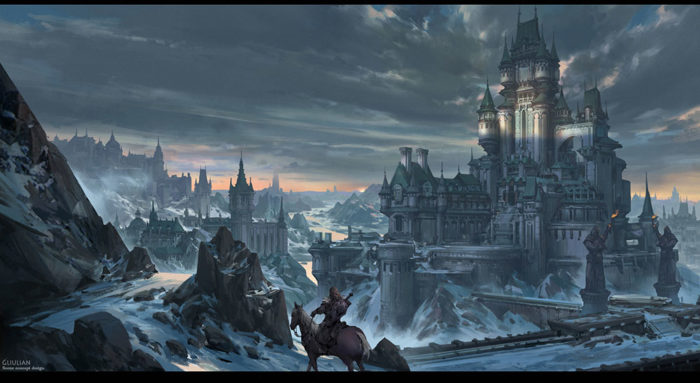
Castles in Dungeons and Dragons come in a wide variety of designs and floorplans
No two castles are alike. Each has defenses specific to that castle. Adventurers exploring such places should never be so familiar with the design of it to know exactly where everything is. Castles are the most formidable fortifications that can be found in most Dungeons and Dragons campaigns. They are designed to be impressive. Even fearsome. One should be awed when approaching a castle for the first time. The opening image from this article is of a knight riding up a trail to a castle. The castle is lined with skulls. Naturally one would expect this castle to be held by some evil villain.
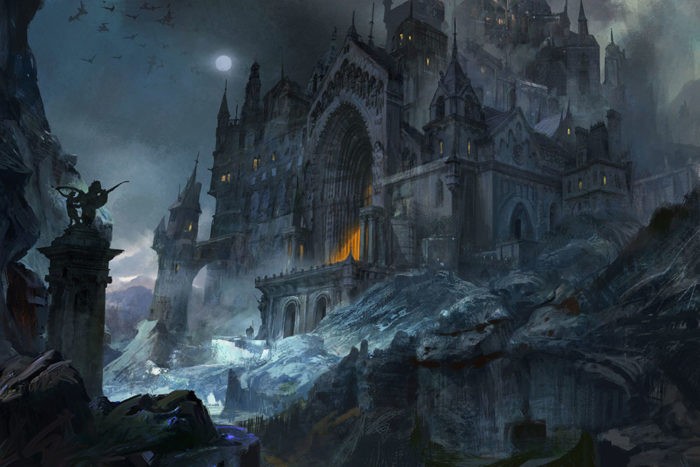
If you enjoyed this article then you might enjoy these:
- Armor in Dungeons and Dragons
- Equipment in Dungeons and Dragons
- Melee Weapons In Dungeons and Dragons
- Missile Weapons in Dungeons and Dragons
- The Tax Man
- Warfare in Dungeons and Dragons
- Weather in Dungeons and Dragons
- Omens and Prophecies
- Pursuit in Dungeons and Dragons
